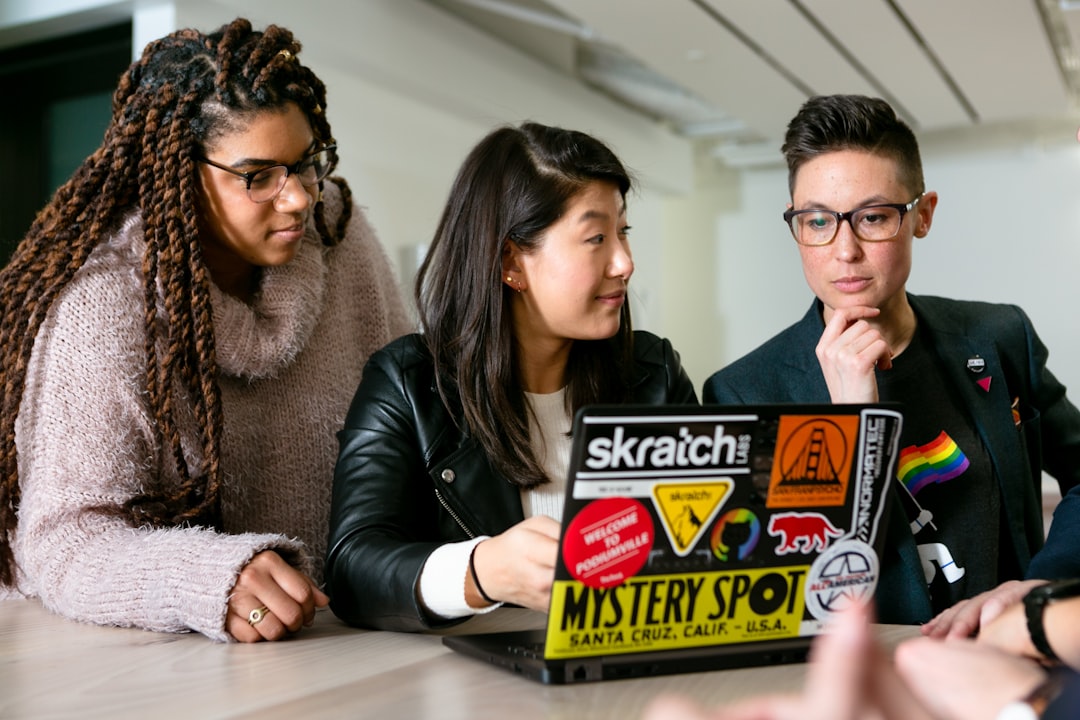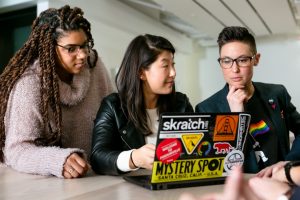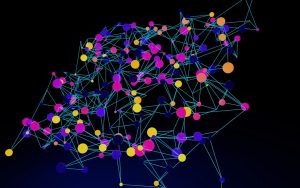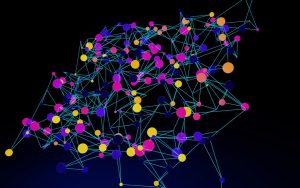ChatGPT in Education: A Tool, Not an Answer Machine
Discover how ChatGPT can enhance learning as a supportive tool rather than an answer machine. Explore effective educational strategies today
OpenAI’s Perspective on ChatGPT Usage
ChatGPT as a Learning Aid
OpenAI envisions ChatGPT as a valuable educational tool that can enhance the learning experience for students. By providing instant access to information and diverse perspectives, ChatGPT can help students explore topics more deeply and develop critical thinking skills.
The tool is designed to support learning by offering explanations, answering questions, and providing examples that can aid in understanding complex subjects.
Encouraging Critical Thinking
OpenAI emphasizes the importance of using ChatGPT to foster critical thinking rather than relying on it for direct answers. The organization encourages students to engage with the information provided by ChatGPT, question its validity, and cross-reference it with other sources.
This approach helps students develop the ability to analyze and synthesize information, which is crucial for academic success and lifelong learning.
Promoting Responsible Usage
OpenAI advocates for responsible usage of ChatGPT, highlighting the need for users to be aware of its limitations. While ChatGPT can generate informative and insightful content, it is not infallible and may sometimes produce incorrect or biased information.
OpenAI advises students to use ChatGPT as a supplementary resource and to verify its outputs against credible sources to ensure accuracy.
Enhancing Creativity and Problem-Solving
By leveraging ChatGPT’s capabilities, students can enhance their creativity and problem-solving skills. OpenAI suggests that students use the tool to brainstorm ideas, explore different viewpoints, and develop innovative solutions to problems.
This interactive use of ChatGPT encourages a more dynamic and engaging learning process, where students are active participants in their education.
Guidance for Educators
OpenAI provides guidance for educators on integrating ChatGPT into the classroom effectively. Teachers are encouraged to use the tool to complement traditional teaching methods, facilitating discussions and encouraging students to explore topics independently.
By incorporating ChatGPT into the curriculum, educators can create a more interactive and inclusive learning environment that caters to diverse learning styles.
Importance of Using ChatGPT Wisely
Enhancing Critical Thinking
ChatGPT can be a powerful tool in education, but it is crucial for students to use it to enhance their critical thinking skills rather than relying on it for direct answers. By engaging with the AI to explore different perspectives and gather information, students can develop their analytical abilities.
This approach encourages them to question the information provided and form their own conclusions, fostering a deeper understanding of the subject matter.
Supporting Learning, Not Replacing It
OpenAI’s education head emphasizes that ChatGPT should be utilized as a supportive tool in the learning process. It can provide explanations, examples, and additional resources that complement traditional learning methods.
However, it should not replace the foundational educational activities such as reading, research, and problem-solving. By using ChatGPT to supplement their studies, students can gain a broader and more nuanced understanding of topics.
Promoting Ethical Use
Using ChatGPT wisely also involves understanding the ethical implications of AI usage in education.
Students should be aware of the importance of academic integrity and the potential risks of over-reliance on AI-generated content. Educators and students alike must ensure that ChatGPT is used to inspire original thought and creativity, rather than serving as a shortcut to completing assignments.
This ethical approach helps maintain the integrity of the educational process.
Developing Digital Literacy
Incorporating ChatGPT into educational practices can help students develop essential digital literacy skills. By interacting with AI, students learn how to evaluate the credibility of information, discern biases, and understand the limitations of AI technologies.
These skills are increasingly important in a digital world where information is abundant and often needs to be critically assessed.
Encouraging Lifelong Learning
When used wisely, ChatGPT can inspire a love for lifelong learning. By providing instant access to a wealth of information, it encourages curiosity and self-directed exploration.
Students can leverage ChatGPT to delve deeper into subjects of interest, ask questions, and seek out new knowledge, fostering a mindset of continuous learning and intellectual growth.
ChatGPT as a Learning Tool
Enhancing Critical Thinking
ChatGPT can be a powerful aid in developing critical thinking skills among students. By engaging with the AI in a dialogue, students are encouraged to question and analyze the information provided.
This process helps them to not only seek answers but also to understand the reasoning behind those answers, fostering a deeper level of comprehension and critical analysis.
Encouraging Independent Research
OpenAI’s education head emphasizes the importance of using ChatGPT as a starting point for research rather than a definitive source. Students can use the tool to gather preliminary information on a topic, which can then guide them to explore further through books, academic articles, and other reliable sources.
This approach nurtures independent research skills and promotes a habit of verifying and cross-referencing information.
Facilitating Personalized Learning
One of the key advantages of ChatGPT is its ability to tailor responses based on individual queries, allowing for a more personalized learning experience. Students can ask questions at their own pace and receive explanations that are adjusted to their level of understanding.
This customization helps in addressing specific learning needs and preferences, making education more accessible and effective.
Supporting Language and Communication Skills
Interacting with ChatGPT can also enhance language and communication skills. As students formulate questions and interpret responses, they practice articulating their thoughts clearly and concisely.
Moreover, ChatGPT can assist in language learning by providing vocabulary, grammar tips, and conversational practice, thereby supporting overall language proficiency.
Promoting Ethical Use of AI
Incorporating ChatGPT into education also presents an opportunity to teach students about the ethical use of AI. By understanding the limitations and biases of AI tools, students can learn to use them responsibly and critically.
This awareness is crucial in preparing students to navigate a world where AI is increasingly prevalent.
Responsible Usage of ChatGPT
Understanding ChatGPT as a Learning Tool
ChatGPT, developed by OpenAI, is a powerful language model that can assist students in various educational tasks. However, it is crucial to recognize its role as a learning aid rather than a source of definitive answers.
By approaching ChatGPT as a tool, students can enhance their understanding of subjects through guided exploration and inquiry.
Using ChatGPT responsibly involves leveraging its capabilities to supplement traditional learning methods. It can provide explanations, suggest resources, and offer different perspectives on a topic, thereby enriching the student’s educational experience.
Encouraging Critical Thinking
One of the key aspects of using ChatGPT responsibly is fostering critical thinking skills.
Students should be encouraged to question and evaluate the information provided by the model. This involves cross-referencing ChatGPT’s responses with other credible sources and forming their own conclusions based on a comprehensive analysis of the data.
By engaging critically with the information, students can develop a deeper understanding of the subject matter and avoid over-reliance on AI-generated content.
This practice not only enhances learning but also prepares students for real-world problem-solving scenarios.
Avoiding Plagiarism and Maintaining Academic Integrity
While ChatGPT can be a valuable educational tool, it is essential to maintain academic integrity by avoiding plagiarism. Students should use the information provided by ChatGPT as a reference or starting point for their own original work.
Proper citation of AI-generated content, when used, is crucial to uphold ethical standards in academic writing.
Educators can play a significant role in guiding students on how to responsibly integrate AI tools like ChatGPT into their academic pursuits. By setting clear guidelines and expectations, educators can help students understand the importance of originality and integrity in their work.
Balancing AI Assistance with Human Interaction
While ChatGPT offers valuable support, it is important to balance AI assistance with human interaction in the educational process.
Teachers, peers, and mentors provide essential feedback, context, and emotional support that AI cannot replicate. Encouraging collaborative learning environments where AI tools complement human instruction can lead to more effective and well-rounded educational outcomes.
By integrating ChatGPT responsibly, students can benefit from a diverse range of learning resources while developing the skills necessary for independent and critical thinking.
FAQ
Q1: How much does it cost to integrate ChatGPT into educational settings, and are there any cost-effective solutions for schools with limited budgets?
A1: The cost of integrating ChatGPT into educational settings can vary significantly based on the scale and specific requirements of the implementation. OpenAI offers different pricing tiers depending on usage volume, which can be a concern for schools with limited budgets. However, there are cost-effective solutions available. Educational institutions can explore partnerships with OpenAI or similar organizations that might offer discounts or grants for educational purposes. Additionally, schools can start with a limited deployment, using ChatGPT in specific departments or for particular projects, to manage costs effectively. Open-source alternatives or community editions of AI tools can also be explored as budget-friendly options, although they might come with fewer features and require more technical expertise to implement.
Q2: Is ChatGPT accessible for educators and students who are not engineers or have limited technical expertise?
A2: Yes, ChatGPT is designed to be user-friendly and accessible even for those with limited technical expertise. The interface is typically straightforward, allowing educators and students to interact with the tool without needing deep technical knowledge. OpenAI provides comprehensive documentation and support to help users get started. Moreover, many educational platforms that integrate ChatGPT offer additional support and training resources to ensure smooth adoption. For educators, understanding the basics of how to frame questions and interpret responses can enhance the effectiveness of using ChatGPT as a teaching tool. Schools can also provide workshops or training sessions to familiarize staff and students with the tool’s capabilities and best practices.
Q3: What are the implementation challenges schools might face when integrating ChatGPT, and how can they ensure compatibility with existing educational tools?
A3: Implementing ChatGPT in educational settings can present several challenges. One primary concern is ensuring compatibility with existing educational tools and platforms. Schools need to assess their current technological infrastructure to determine if it can support the integration of AI tools like ChatGPT. Compatibility issues might arise with older systems or software, necessitating updates or additional middleware solutions. Another challenge is data privacy and security, as educational institutions must comply with regulations such as FERPA in the U.S. Schools should work closely with IT professionals to ensure secure data handling and storage. To mitigate these challenges, schools can conduct pilot programs to test the integration process, gather feedback, and make necessary adjustments before a full-scale rollout. Additionally, collaborating with technology partners and leveraging their expertise can help streamline the implementation process.
Takeaway
“Ready to unlock the power of AI? Try our cutting-edge tool now! Stay ahead of the curve with the latest tech trends – subscribe for updates today. Join our vibrant tech community to share insights and network with like-minded innovators. Let’s shape the future together!” According to a report by Bloomberg,











Comments